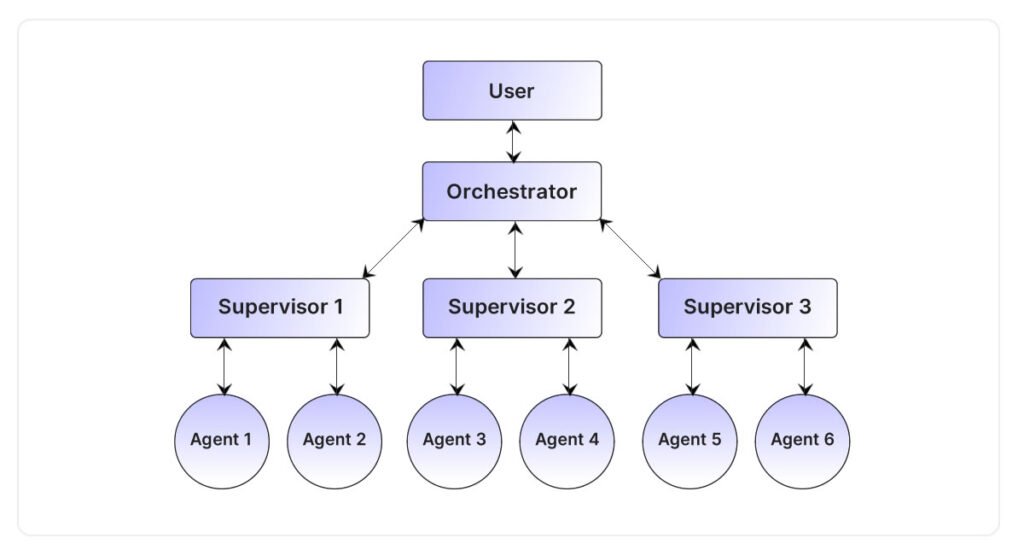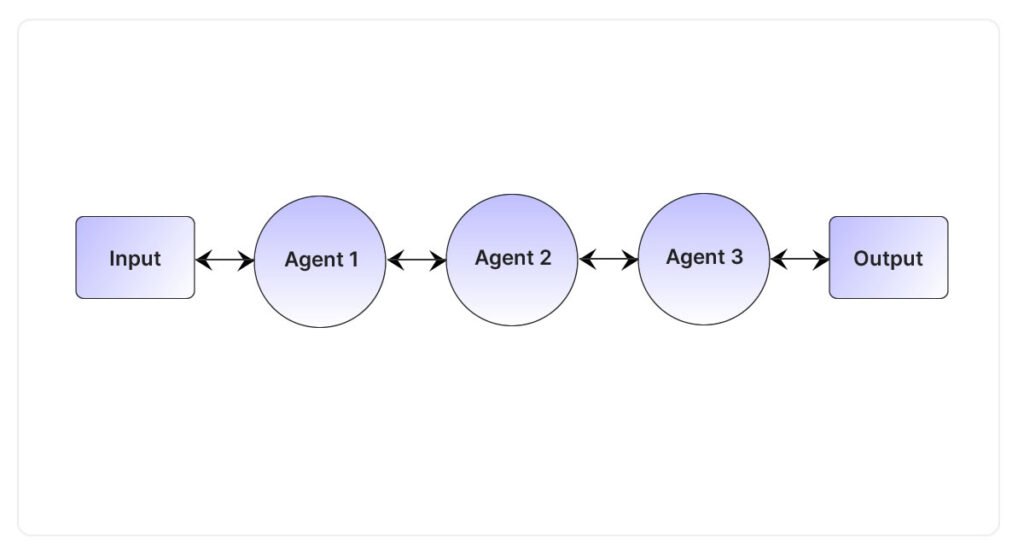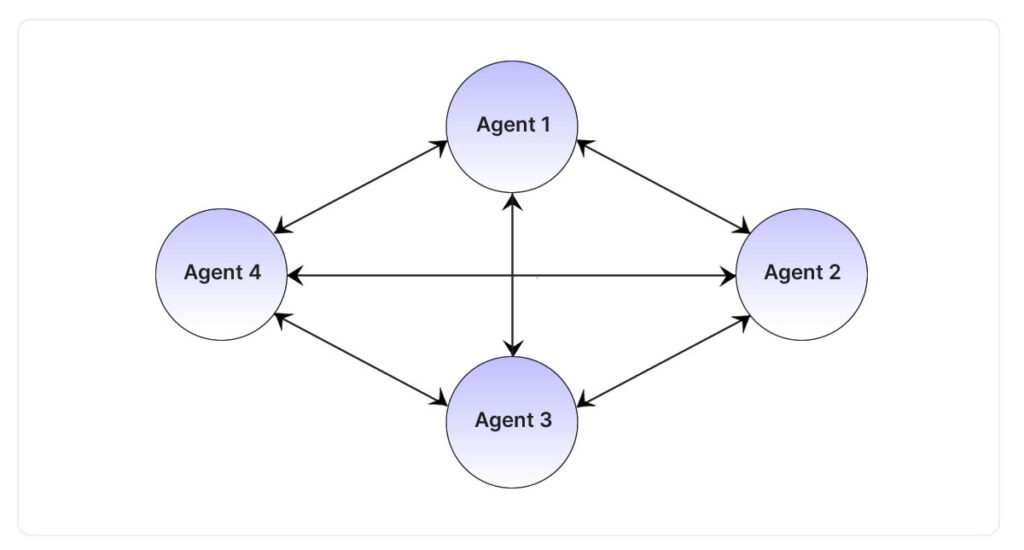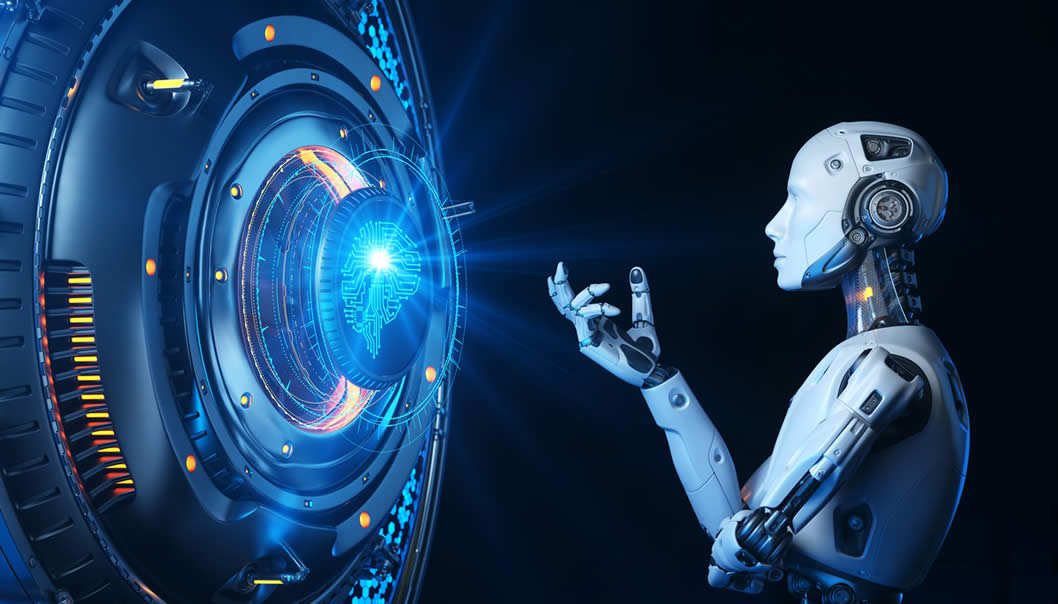Multi-Agent Systems represent the next leap in AI architecture, where intelligence isn’t concentrated in a single, overloaded model, but distributed across a coordinated team of specialized agents. Instead of one system trying to reason, plan, retrieve, execute, and troubleshoot everything at once, multi-agent setups break complexity into focused roles that collaborate to deliver faster, more reliable outcomes. This shift isn’t just about scaling performance; it’s about designing AI that mirrors how high-functioning human teams work – clear responsibilities, seamless handoffs, and collective problem-solving. As tasks grow deeper, tools multiply, and expectations rise, multi-agent systems offer the structure and efficiency modern AI applications demand.
Why Do We Need Multi AI Agents?
Single AI agents (e.g. one LLM-based agent) can struggle with complex, multi-step tasks, especially when many tools or domains are involved. As tasks grow more complex, a lone agent’s performance often degrades. According to benchmarking results conducted by Langchain, giving a single agent more tools or more context can actually reduce its effectiveness. It may become overwhelmed or even get stuck in repetitive loops if it can’t solve a problem on its own. Multi-agent systems address these limits by dividing work among specialized agents. Multiple AI agents collaborating can tackle facets of a problem that no single agent could handle alone. In fact, research shows that multi-agent collaboration can improve success rates on complex goals by up to 70% compared to a single-agent approach. In short, we use multi-agent setups to overcome the scaling limitations of one agent, achieving more robust and efficient performance on complicated tasks.
When to Use Single Agent vs. Multi-Agent
Not every problem needs a fleet of agents. Here’s when each approach makes sense:
Single Agent
Use one agent when the task is simple or well-bounded. A single LLM acting alone (possibly with a few tools) is the simplest architecture to set up. This works well for straightforward queries or tasks that don’t require highly diverse expertise. However, a single agent can become overloaded as you pile on more responsibilities. Studies show that as you increase the number of instructions or tools for one agent, its performance drops. Single agents are also more prone to getting stuck in an execution loop if they hit a dead-end reasoning path. In summary, a single agent is best for simple, self-contained tasks with minimal tool use.
Multi-Agent
Use multiple agents when a task is complex, multi-modal, or can be naturally split into sub-tasks. In a multi-agent system, 2 or more agents coordinate and specialize, with each agent focusing on a specific role. This specialization can drive major efficiency gains, for example, one agent can handle web research while another writes code, in parallel. By delegating sub-tasks to experts, the system can solve problems that a monolithic agent would fail at. Multi-agent setups shine for multi-faceted tasks, where different skills or tools are needed. They tend to be more robust on complex workflows and can avoid loops by having agents critiquing or correcting each other’s work. The trade-off is added complexity in design and communication, but for difficult problems or heavy tool use, a multi-agent architecture is often worth it.
Common Multi-Agent Patterns
Multi-agent systems can be organized in different structural patterns. Below are some common patterns, with examples of how they function:
Supervisor (Orchestrator) Pattern

This is a centralized “router” approach. A primary supervisor agent receives the initial task and then delegates parts of it to other specialist agents, one by one. The supervisor decides which agent is best for each sub-task, calls that agent, then integrates the results before moving to the next step. For example, a manager agent might first ask a Research agent for data, then pass that data to a Writer agent for report writing, step by step. This one-at-a-time delegation is useful when sub-tasks are sequentially dependent.
A variation is to invoke multiple agents in parallel (one-to-many) for independent sub-tasks. In the parallel case, the orchestrator distributes work to several agents at once (since their tasks don’t depend on each other) and then aggregates the results. The Supervisor pattern (whether sequential or parallel) provides a clear chain of command: one agent coordinates the team. Its strengths are in structured problem decomposition and centralized control, e.g. a travel assistant that routes questions to a Flight Booking agent or Weather agent as needed. The downside is the supervisor can become a single point of failure if it misroutes or fails.
Hierarchical Pattern

This extends the supervisor idea into multiple layers. Agents are organized in a tree-like hierarchy with agents at one level supervising those below. For instance, a top-level boss agent could break a project into big pieces and assign to mid-level manager agents, which in turn delegate to low-level specialist agents. Each agent has a clear role and possibly its own sub-team. This mirrors how large organizations work (e.g. a project manager agent oversees design, engineering, and QA agent teams).
The benefit is scalability through specialization, each agent only focuses on its scope, maintaining a limited context. It also enables reusing and testing each component agent independently. Hierarchical systems retain some centralized control at each layer, but distribute the reasoning burden. This pattern fits complex tasks that naturally break down into sub-tasks and sub-sub-tasks.
Deterministic Flows (Sequential & Circular)

These patterns arrange agents in a fixed workflow. In a Sequential pipeline, agents are lined up in a specific order, the output of Agent A feeds into Agent B, then into Agent C, and so on. This is like an assembly line: for example, Agent 1 summarizes a document, Agent 2 translates the summary, Agent 3 reviews for accuracy. Each agent does its part then hands off to the next. The flow is predetermined and linear.

A Circular flow is a looped variant of this. After the last agent finishes, its output is fed back into the first agent. The agents thus cycle through multiple rounds, refining the solution with each iteration. This can be useful for processes that need iterative improvement, say, Agent A generates a plan, Agent B critiques it, and back to A to improve the plan, repeating until the result is good. Deterministic flows are programmed coordination, easy to trace and test since the path is fixed. However, they are inflexible if a task doesn’t fit the preset sequence. They work best when the task breakdown is well understood upfront (pipeline) or when you explicitly want iterative refinement (circular loop).
Swarm or Network Pattern

This is a decentralized, all-to-all collaboration. There is no single leader, every agent can communicate with others as needed. The system behaves like a team of peers (akin to a brainstorming group). Each agent may have its own strategy or view of the problem, and they continuously share updates with each other. Through these interactions, a solution emerges collectively.
For example, you might have a Creative idea-generating agent, a Critic agent, a Fact-Checker, and a Synthesizer all sharing information in a common workspace. They iterate together: the Creative agent proposes an idea, the Critic refines it, the Fact-Checker corrects it, the Synthesizer summarizes, and these roles can communicate freely in multiple rounds. Swarm patterns excel at exploring many possibilities in parallel and can be robust. There’s no single failure point if one agent under-performs.
The trade-off is complexity in coordination. Without a fixed structure, you need well-designed communication protocols and maybe a shared memory so agents stay on the same page. Swarm systems can also incur higher computational cost since many agents chat back-and-forth iteratively. This pattern is useful when a task benefits from creative collaboration or consensus, for instance, generating ideas, solving open-ended problems, or when you want agents to cross-verify each other’s results for reliability.
Custom Patterns
In practice, many systems use a hybrid or custom architecture tailored to their use case. An agent graph is one way to design a custom topology. You define a directed network of agents and the pathways for information flow. This could combine elements of the above patterns. For example, you might have a star configuration (one central coordinator with several specialists) but also allow those specialists to talk to each other for specific feedback loops, a mix of supervisor and swarm patterns.
Custom patterns are designed to fit the specific workflow or organizational logic of the problem. One might create a multi-tier workflow with condition-based routing (deterministic flow + hierarchy) or a mesh with certain constraints (a moderated swarm). The key is that any topology (tree, graph, ring, etc.) can be used as needed.
Custom architectures give you fine-grained control over who communicates with whom, enabling enforcement of domain-specific rules. For instance, you might require that a Quality Check agent must approve outputs from both a Generator agent and a Verifier agent before a result is final, a bespoke arrangement ensuring safety. The flexibility of custom patterns lets developers optimize for their unique requirements, though it also demands more design effort to get right.
Best Practices for Multi-Agent Systems
When building a multi-agent AI system, it’s crucial to follow best practices so the system remains efficient, scalable, and safe. Key guidelines include:
- Define clear objectives and roles for each agent: Give each agent a well-defined purpose or domain of responsibility. Avoid overlapping duties that could cause confusion or conflicts. With clear boundaries, agents can focus on their tasks and hand off other issues outside their scope. This clarity improves coordination and prevents agents from stepping on each other’s toes.
- Use modular, composable architectures: Design your system in a modular way so that agents (and their subsystems) can be added, removed, or updated independently. Decouple components, for example, keep communication, reasoning, and tool interfaces separate. This makes the system easier to maintain and scale. A modular setup also lets you test or upgrade one agent without breaking the whole system.
- Establish effective communication protocols: Set up a clear method for agents to exchange messages and data. This could be a structured message format (e.g. JSON), a shared memory space, or well-defined APIs. By standardizing how agents talk (and what language or schema they use), you ensure they understand each other’s information. Good protocols also include rules for turn-taking or resolving conflicts if two agents disagree. Essentially, communication is the backbone of a multi-agent system, design it thoughtfully.
- Implement adaptive decision-making: Your multi-agent system should be able to adjust its behavior based on feedback and changing conditions. Rigid, hard-coded flows might fail if something unexpected happens. Instead, allow for adaptability, for example, agents can request help from others if they’re stuck, or retry a task with a different strategy. An adaptive architecture (with modular components and feedback loops) lets agents collaboratively adjust plans on the fly. This means the system isn’t brittle: agents can learn from outcomes and improve the next steps, rather than repeating the same mistakes.
- Design for scalability: As you add more agents or more tasks, the system should remain efficient. Plan the architecture to scale out, possibly by using decentralized decision-making to avoid bottlenecks. Ensure that adding a new agent or capability doesn’t require a complete overhaul. Using interoperable standards and keeping agents loosely coupled helps here. Also, consider performance: a solution that works for 3 agents might bog down with 30, so anticipate growth in agent communication volume, memory, and compute needs.
- Monitor and manage agent interactions: Continuous monitoring is essential in multi-agent systems. Log the agents’ decisions and messages so you can audit what’s happening. Watch for emergent behaviors, sometimes agents together might do something unforeseen. By tracking interactions, you can spot glitches or conflicts early. It’s wise to implement constraints like timeouts (so an agent doesn’t loop forever) and max iterations for cycles. If an agent fails or produces an error, have a strategy (maybe a supervisory agent or a watchdog process) to catch that and recover gracefully. Essentially, treat the multi-agent system as an ecosystem that needs management and debugging tools in place.
- Prioritize security measures: With multiple autonomous agents, security is paramount. Each agent should operate with the least privileges needed, for example, if one agent only needs database read access, don’t give it write/delete rights. Isolate agents’ execution environment (sandbox them) to prevent unintended actions on the host system. Also guard against prompt injection or data leaks that could happen when agents communicate. Establish trust boundaries: if one agent handles sensitive data, ensure it doesn’t freely share that with others unless appropriate. Implement audit logs and possibly a “kill-switch” to halt agents if they go out of control. By design, build in security hooks and validations so that the convenience of agent autonomy doesn’t become a vulnerability.
- Incorporate human oversight and control hooks: Especially in high-stakes applications (finance, healthcare, etc.), keep a human in the loop. Provide interfaces for a human operator to review agent decisions, intervene, or adjust parameters if needed. You might have checkpoints where an agent’s output is approved by a person, or a dashboard showing live agent activities. At minimum, include an override or pause mechanism, a human should be able to stop the system if it’s going awry. Human oversight acts as a safety net to catch errors that the agents might miss and ensures accountability for the system’s actions.
Conclusion
Multi-agent AI systems represent a powerful way to solve problems that single agents alone cannot easily handle. By having agents specialize and collaborate, a well-designed MAS can be more scalable, flexible, and resilient than a monolithic solution. The key is thoughtful architecture and governance. With the right pattern and best practices in place, the collective intelligence of multiple agents truly becomes greater than the sum of its parts. When properly managed, multi-agent systems enable us to tackle complex, multi-faceted tasks efficiently, while maintaining reliability and control over AI-driven processes.





